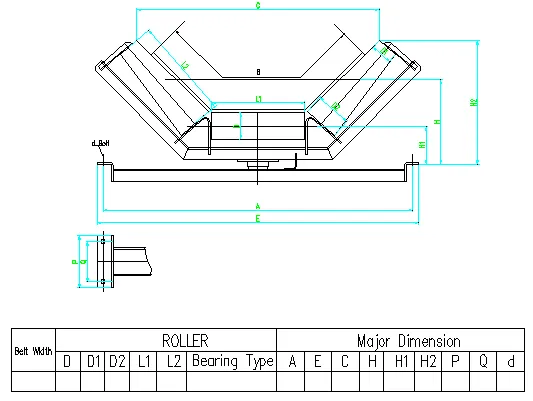 Afrikaans
Afrikaans  Albanian
Albanian  Amharic
Amharic  Arabic
Arabic  Armenian
Armenian  Azerbaijani
Azerbaijani  Basque
Basque  Belarusian
Belarusian  Bengali
Bengali  Bosnian
Bosnian  Bulgarian
Bulgarian  Catalan
Catalan  Cebuano
Cebuano  Corsican
Corsican  Croatian
Croatian  Czech
Czech  Danish
Danish  Dutch
Dutch  English
English  Esperanto
Esperanto  Estonian
Estonian  Finnish
Finnish  French
French  Frisian
Frisian  Galician
Galician  Georgian
Georgian  German
German  Greek
Greek  Gujarati
Gujarati  Haitian Creole
Haitian Creole  hausa
hausa  hawaiian
hawaiian  Hebrew
Hebrew  Hindi
Hindi  Miao
Miao  Hungarian
Hungarian  Icelandic
Icelandic  igbo
igbo  Indonesian
Indonesian  irish
irish  Italian
Italian  Japanese
Japanese  Javanese
Javanese  Kannada
Kannada  kazakh
kazakh  Khmer
Khmer  Rwandese
Rwandese  Korean
Korean  Kurdish
Kurdish  Kyrgyz
Kyrgyz  Lao
Lao  Latin
Latin  Latvian
Latvian  Lithuanian
Lithuanian  Luxembourgish
Luxembourgish  Macedonian
Macedonian  Malgashi
Malgashi  Malay
Malay  Malayalam
Malayalam  Maltese
Maltese  Maori
Maori  Marathi
Marathi  Mongolian
Mongolian  Myanmar
Myanmar  Nepali
Nepali  Norwegian
Norwegian  Norwegian
Norwegian  Occitan
Occitan  Pashto
Pashto  Persian
Persian  Polish
Polish  Portuguese
Portuguese  Punjabi
Punjabi  Romanian
Romanian  Russian
Russian  Samoan
Samoan  Scottish Gaelic
Scottish Gaelic  Serbian
Serbian  Sesotho
Sesotho  Shona
Shona  Sindhi
Sindhi  Sinhala
Sinhala  Slovak
Slovak  Slovenian
Slovenian  Somali
Somali  Spanish
Spanish  Sundanese
Sundanese  Swahili
Swahili  Swedish
Swedish  Tagalog
Tagalog  Tajik
Tajik  Tamil
Tamil  Tatar
Tatar  Telugu
Telugu  Thai
Thai  Turkish
Turkish  Turkmen
Turkmen  Ukrainian
Ukrainian  Urdu
Urdu  Uighur
Uighur  Uzbek
Uzbek  Vietnamese
Vietnamese  Welsh
Welsh  Bantu
Bantu  Yiddish
Yiddish  Yoruba
Yoruba  Zulu
Zulu Different Types of Conveyor Idlers and Their Applications in Material Handling
Types of Conveyor Idlers An Overview
Conveyor systems play a crucial role in various industries, providing efficient transportation of materials across different areas. A central component of these systems is the conveyor idler, which supports the conveyor belt and helps in maintaining its alignment. Idlers are pivotal in ensuring the smooth operation of conveyor systems, reducing wear on the belt and increasing overall efficiency. This article explores the various types of conveyor idlers, their functions, and applications.
1. Carrying Idlers
Carrying idlers are the most commonly used type of idler. They are designed to support the bulk material on the conveyor belt during the transportation process. Typically arranged in sets, carrying idlers enable the conveyor belt to maintain proper tension while minimizing sag. They come in various configurations, including flat and troughing shapes. Troughing idlers are particularly beneficial as their shape helps keep material from spilling over the edges of the belt.
As the name suggests, return idlers are located on the return side of the conveyor system. Their primary role is to support the belt as it returns to the loading area after discharging its materials. Like carrying idlers, return idlers are available in different configurations and styles. The design is crucial to reduce friction and wear on the belt as it moves back, ensuring the longevity of the system.
3. Impact Idlers
types of conveyor idlers

Impact idlers are specifically designed to withstand the shock and impact caused by heavy materials falling onto the conveyor belt. These idlers are typically placed near loading areas where the bulk materials are dumped onto the belt. They have a reinforced structure that helps mitigate the effects of impact, thereby protecting the belt and extending the conveyor system's lifespan.
4. Training Idlers
Training idlers, often referred to as aligners, play a vital role in maintaining the alignment of the conveyor belt. Misalignment can lead to excessive wear and tear on the belts and idlers, which can result in costly downtime. Training idlers are adjustable and are used to steer the belt back into the correct position when it begins to drift off course. Proper alignment facilitated by these idlers is essential for the smooth and efficient operation of the conveyor system.
5. Specialty Idlers
In addition to the standard types mentioned, there are specialty idlers designed for specific applications. These include self-cleaning idlers and idlers that can handle high temperatures or corrosive materials. Self-cleaning idlers prevent material build-up, reducing maintenance needs and improving efficiency. Specialty idlers allow users to customize their conveyor systems to suit particular operational requirements, further enhancing their performance.
Conclusion
Conveyor idlers are essential components of conveyor systems, contributing significantly to their efficiency and longevity. With various types available, including carrying, return, impact, training, and specialty idlers, users can select the most suitable options based on their operational demands. Understanding the functionalities and applications of different idler types can help industries optimize their material handling processes, reduce downtime, and enhance productivity. As industrial processes evolve, so too will the design and functionality of conveyor idlers, paving the way for even more efficient transportation solutions in the future.
-
Revolutionizing Conveyor Reliability with Advanced Rubber Lagging PulleysNewsJul.22,2025
-
Powering Precision and Durability with Expert Manufacturers of Conveyor ComponentsNewsJul.22,2025
-
Optimizing Conveyor Systems with Advanced Conveyor AccessoriesNewsJul.22,2025
-
Maximize Conveyor Efficiency with Quality Conveyor Idler PulleysNewsJul.22,2025
-
Future-Proof Your Conveyor System with High-Performance Polyurethane RollerNewsJul.22,2025
-
Driving Efficiency Forward with Quality Idlers and RollersNewsJul.22,2025





























